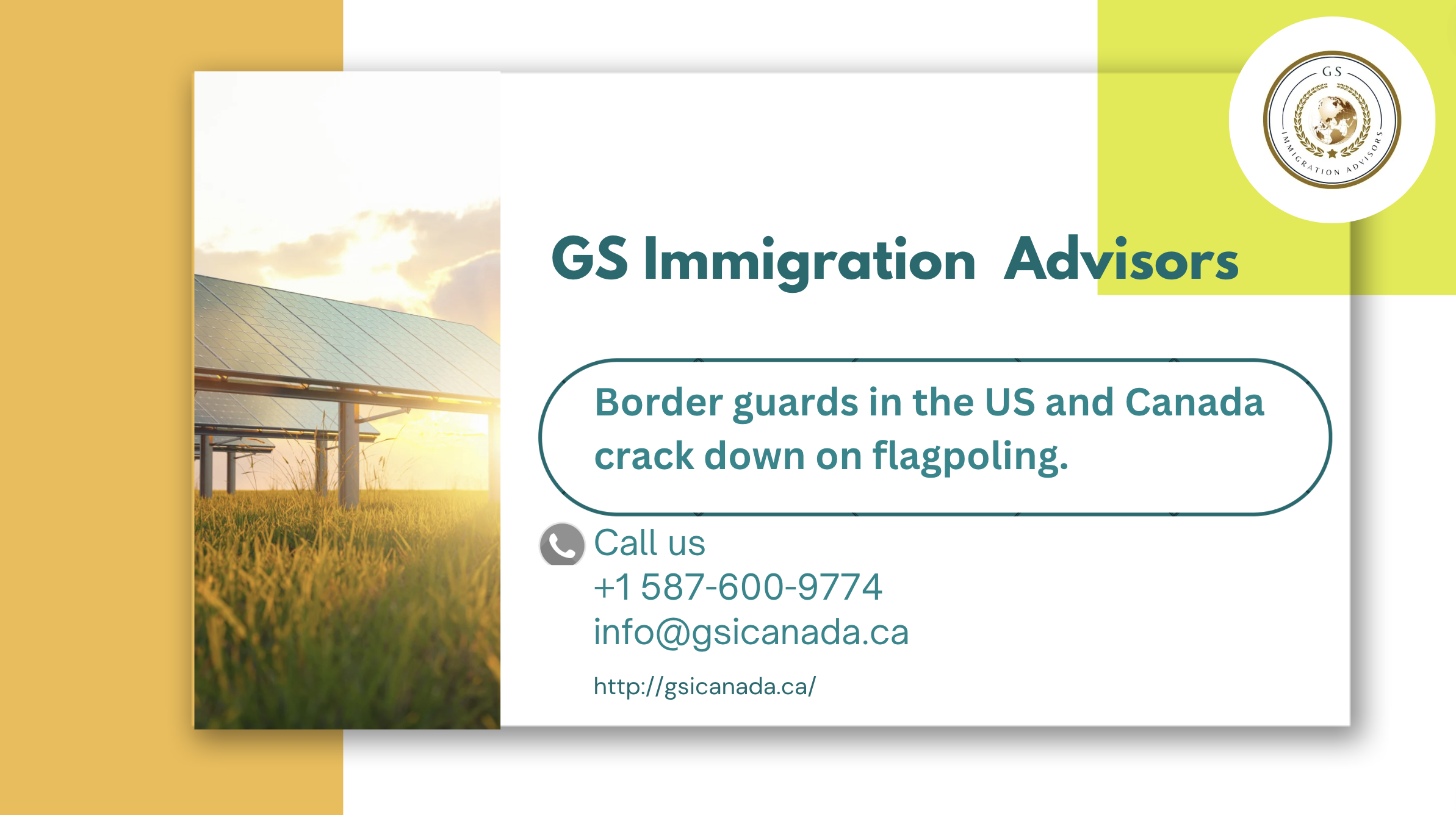
The quantity of ports of entry (POEs) that may be utilized as flagpoling locations has been restricted by Canadian and American authorities.
Only 12 Canada-U.S. border crossings will provide flagpoling services to newcomers as of May 30th, 2024.
Flagpoling: What is it?
Flagpoling is a procedure wherein temporary residents—individuals with a guest visa, work/study permit, or electronic travel authorization (eTA)—may obtain immigration services in person at a POE by leaving and coming back to Canada within a 24-hour period.
This procedure, which is lawful and has grown in popularity, helps shorten the time it takes to process applications to Immigration, Refugees and Citizenship Canada (IRCC), whether they are submitted online or on paper.
Flagpoling is allowed, although the Canadian Border Services Agency (CBSA) cautions that there may be long waits and suggests that newcomers use IRCC’s online services first.
Where can newcomers in Canada access flagpoling services?
Newcomers can access flagpoling services at the following locations and times:
Quebec Region
- Armstrong—Monday-Thursday from 12 pm to 7 pm;
- Saint Armand/Phillipsburg—Monday-Thursday from 9 am to 3 pm;
- Saint Bernard de Lacolle—Monday-Thursday from 12 pm to 7 pm; and
- Stanstead Route 55—Monday-Thursday from 8 am to 5 pm.
Southern Ontario Region
- Fort Erie (Peace Bridge)—Tuesday-Thursday from 8 am to 12 am;
- Niagra Falls Rainbow Bridge—Tuesday-Thursday from 8 am to 12 am; and
- Queenston-Lewiston Bridge—Tuesday-Thursday from 8 am to 12 am.
Pacific Region
- Abbotsford-Huntington—Monday-Thursday from 10 am to 4 pm;
- Aldergrove—Monday-Thursday from 10 am to 4 pm;
- Boundary Bar—Monday-Thursday from 10 am to 2 pm;
- Douglas— Monday-Thursday from 10 am to 4 pm; and
- Pacific Highway— Monday-Thursday from 10 am to 4 pm.
Note: At the time of writing CBSA has threatened to enter a strike following wage disputes between the border authorities and the federal Canadian government. This may further impact flagpoling services for the duration of these negotiations.
What has caused the recent crackdown on flagpoling?
Statements by Canadian and U.S. officials indicate that new changes to flagpoling are largely due to increased traffic at the Canada-U.S. border, increasing processing stress on officers at the border.
In a statement to the Canadian Broadcasting Corporation (CBC), CBSA stated that they made changes to locations and hours of flagpoling services to increase efficiencies during peak travel times, and to “allow officers to focus on other priorities, including trade facilitation, high-risk travelers and asylum seekers”.
This opinion is supported by remarks made by U.S. Senate Majority Leader Chuck Schumer. Schumer clarified the issue at a recent news conference, stating that the heightened immigration traffic and wait times endanger the economies of New York and Niagra Falls by “hindering smooth commerce” and tourism.